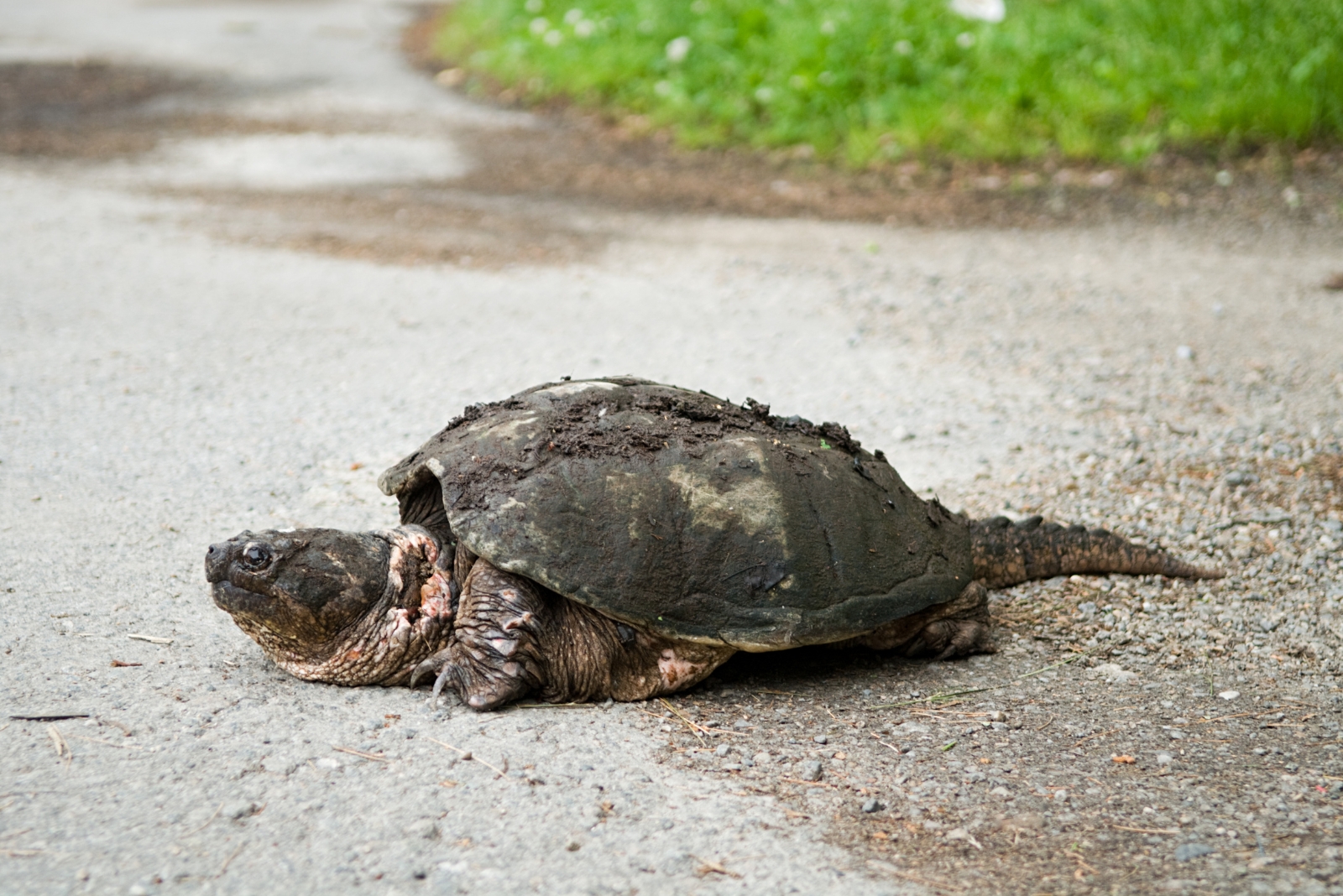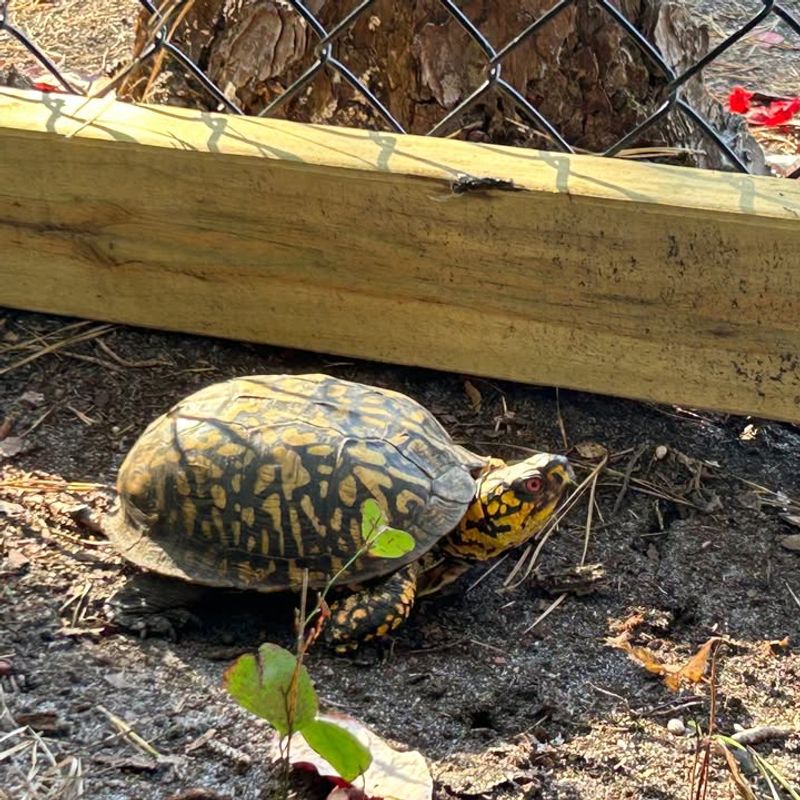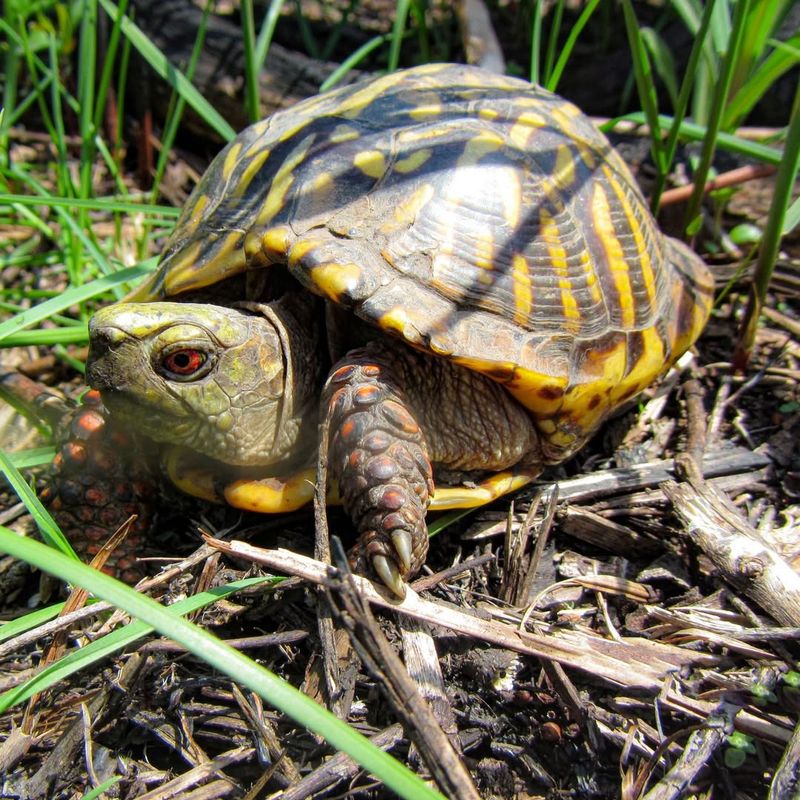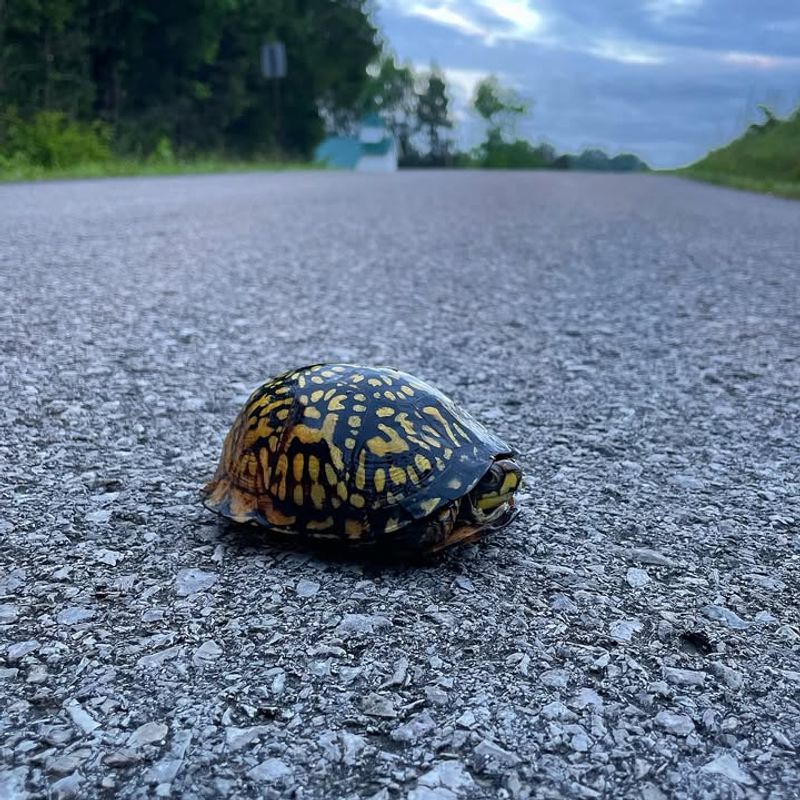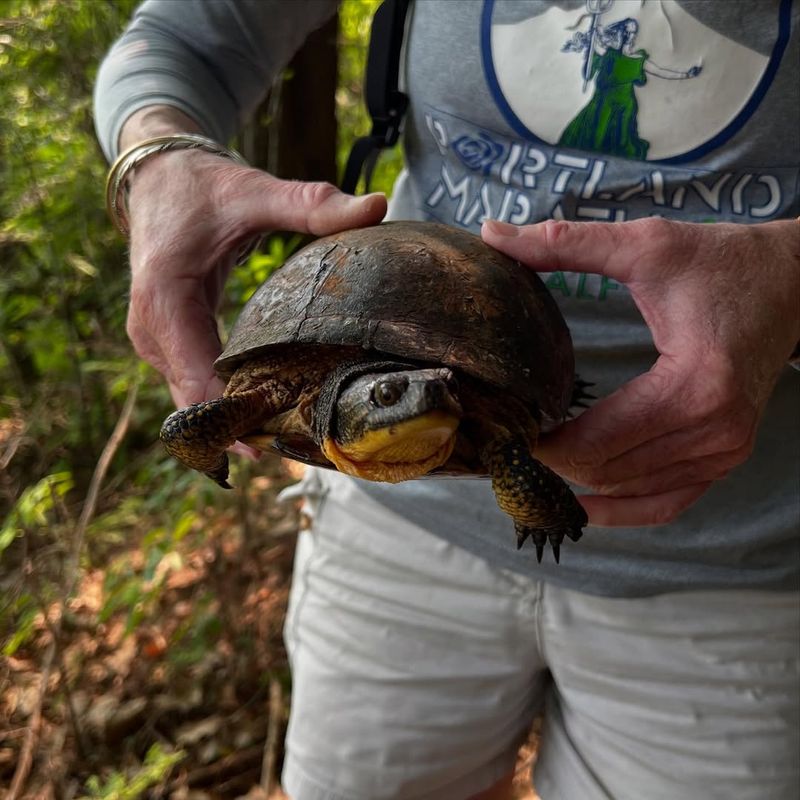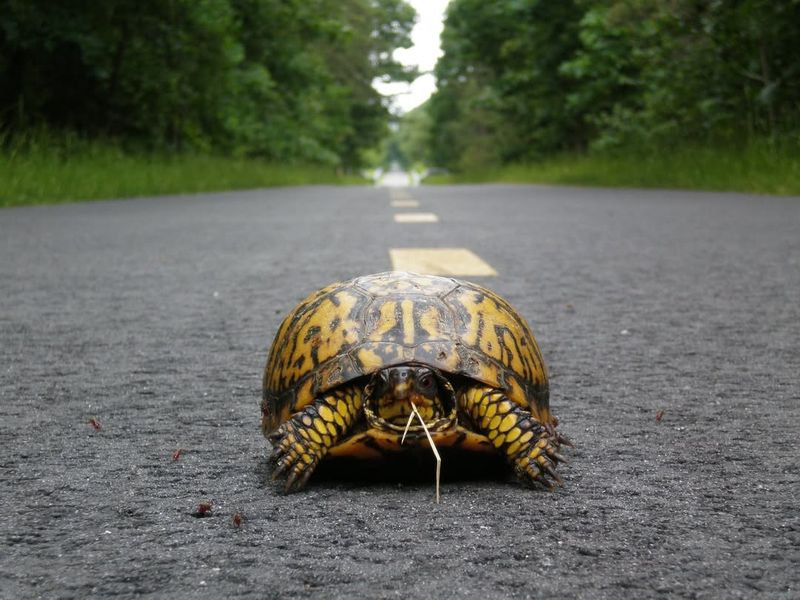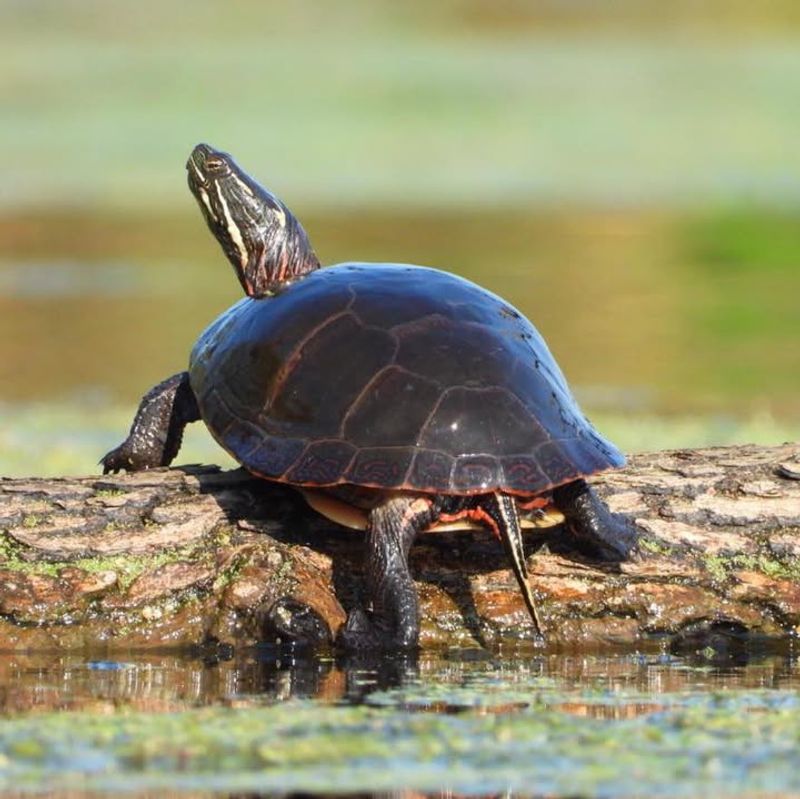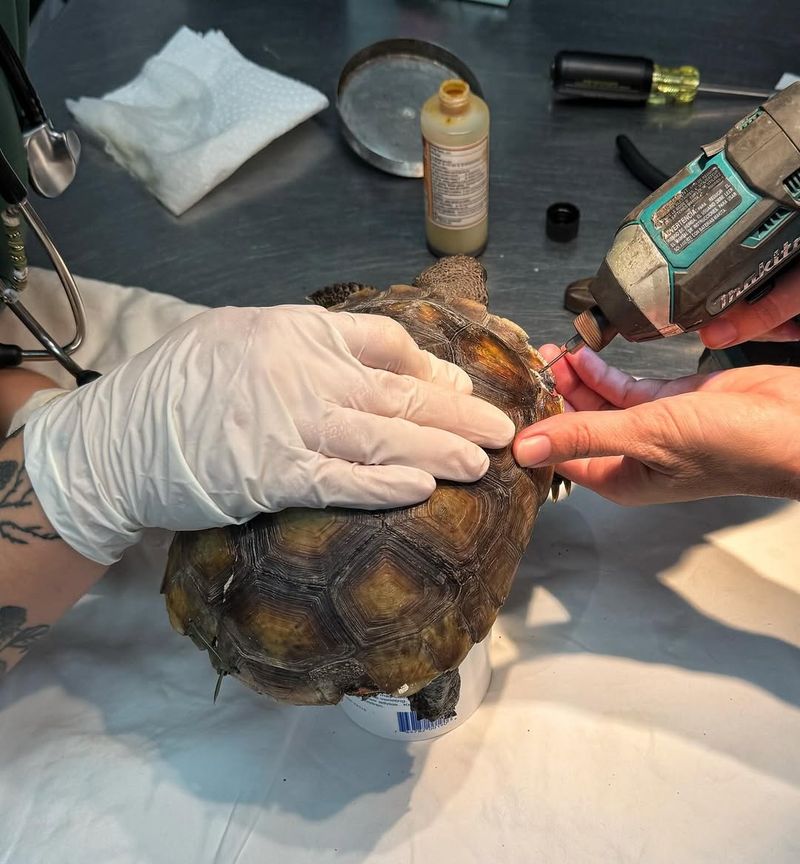Spotting a turtle in your Iowa yard can be exciting, but it also comes with some responsibility. Turtles play an important role in our local ecosystem, knowing how to respond when you find one can help keep both you and the turtle safe.
If the turtle is crossing your driveway or basking near your garden, following a few simple steps makes all the difference.
1. Observe From A Safe Distance First
Before rushing over, take a moment to watch the turtle from where you stand. Turtles can get stressed when people approach too quickly, and some species may retreat into their shells or even snap if they feel threatened.
Keeping your distance lets you figure out what kind of turtle it is and whether it needs help. You can also see if it looks injured or healthy.
Use this time to call family members over so everyone can enjoy watching nature up close without disturbing the creature.
2. Identify The Species If Possible
Iowa is home to several turtle species, including painted turtles, box turtles, and snapping turtles. Each one has different needs and behaviors, so knowing which type you found helps you decide what to do next.
Painted turtles have colorful markings on their shells and skin. Box turtles have dome-shaped shells and can close up completely. Snapping turtles are larger with rough shells and powerful jaws.
If you are unsure, snap a photo and look it up online or contact a local wildlife expert for guidance.
3. Check If The Turtle Needs Assistance
Most turtles you encounter are simply passing through and do not need your help. However, if the turtle is stuck in a dangerous spot like a busy Iowa road or driveway, it might need a gentle hand to reach safety.
Look for signs of injury such as cracks in the shell, bleeding, or unusual behavior like flipping upside down. Healthy turtles move steadily and purposefully toward their destination.
Remember that turtles often travel to find food, water, or nesting sites, so interference should only happen when truly necessary.
4. Handle With Care Using Proper Technique
When you must move a turtle, always pick it up by grasping both sides of the shell near the middle. Never grab a turtle by its tail, as this can seriously injure its spine and internal organs.
If you find snapping turtles in your Iowa yard, stay extra cautious since they have long necks and strong bites. Hold them by the back of the shell, keeping your fingers away from the head and legs.
Keep the turtle low to the ground while carrying it to prevent injuries if it wiggles free from your grip.
5. Move It In The Direction It Was Heading
Turtles have strong instincts and specific destinations in mind when they travel. Moving a turtle backward or to a random location can confuse it and force the animal to cross danger again.
Always carry the turtle to the side of the road or Iowa area where it was originally headed. Place it gently in a safe spot with grass or vegetation nearby.
Female turtles traveling in late spring or early summer are often looking for nesting sites, so respecting their journey is especially important during these months.
6. Never Relocate Turtles To New Habitats
It might seem kind to take a turtle to a nearby Iowa pond or park, but relocating turtles away from their home territory can be harmful. Turtles have strong connections to their specific areas and may struggle to survive somewhere unfamiliar.
Removing turtles from their habitat also disrupts local ecosystems and can spread diseases to other turtle populations. Additionally, some species are protected by law, making relocation illegal.
If you find a turtle that seems lost, contact your local wildlife rehabilitation center for professional advice instead.
7. Contact Wildlife Experts For Injured Turtles
Discovering an injured turtle requires professional help rather than home treatment. Cracked shells, wounds, or turtles that cannot move properly need specialized veterinary care to recover successfully.
Search online for Iowa wildlife rehabilitation centers or call your local Department of Natural Resources office. Many organizations have hotlines specifically for reporting injured wildlife and can arrange pickup or provide instructions.
While waiting for help, keep the turtle in a safe, quiet container with air holes, away from pets and extreme temperatures to reduce additional stress.

